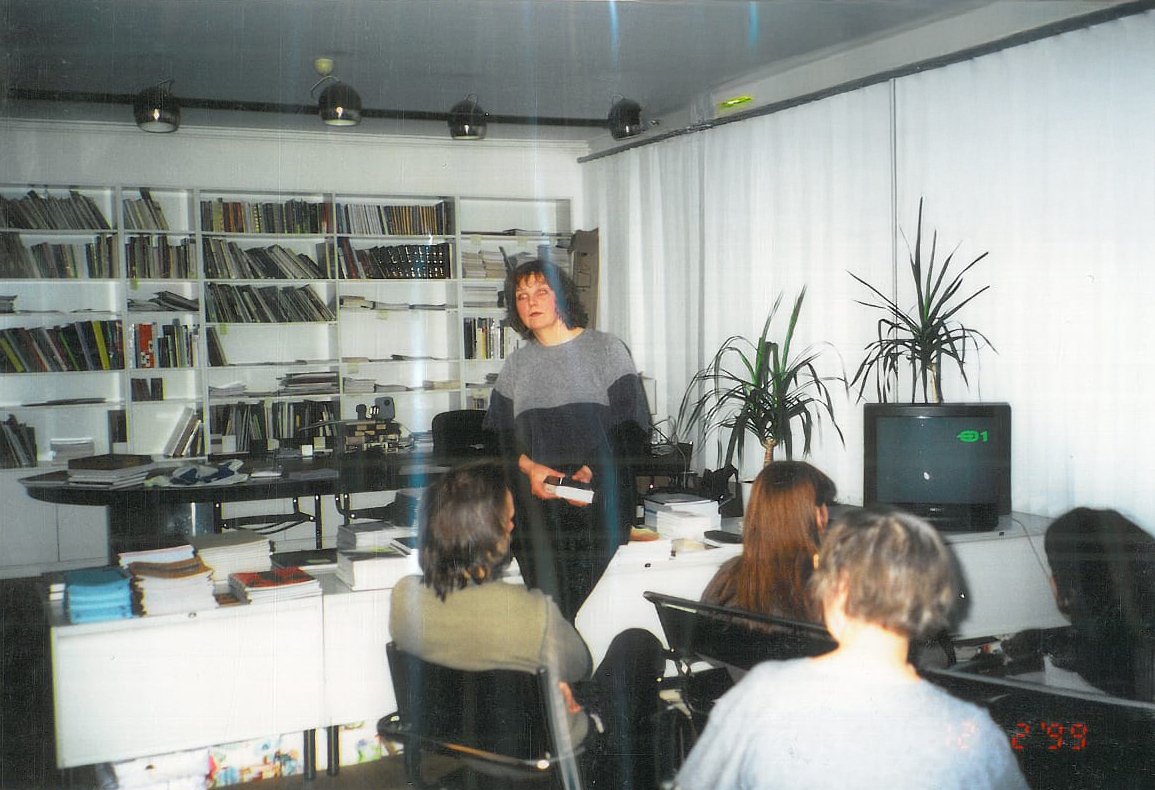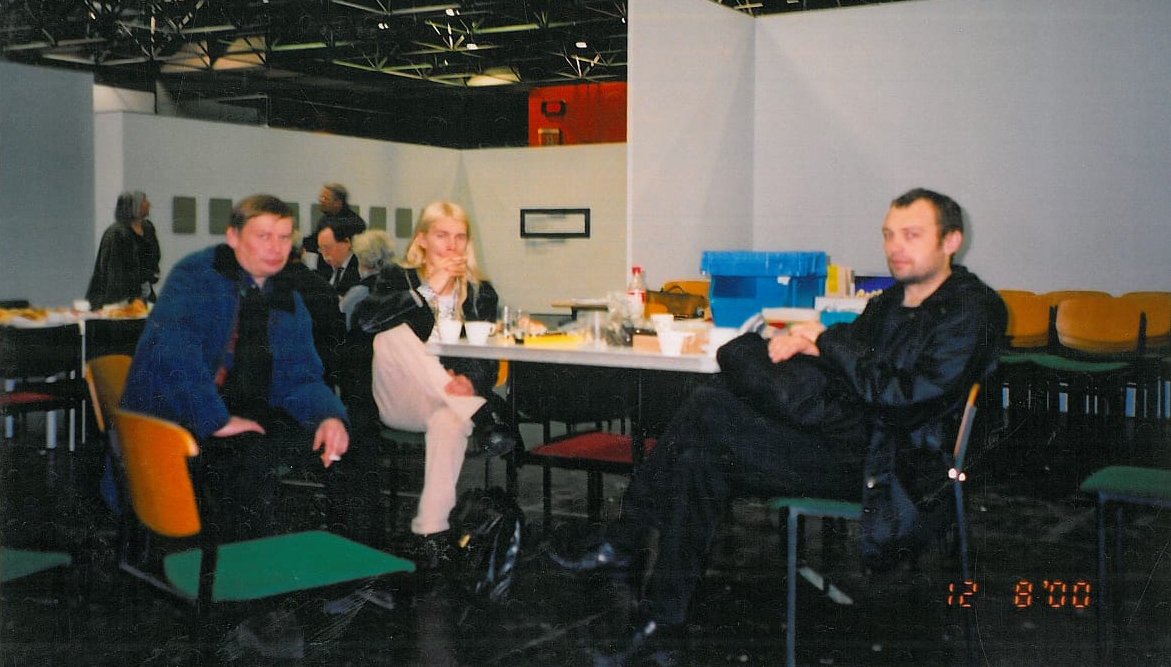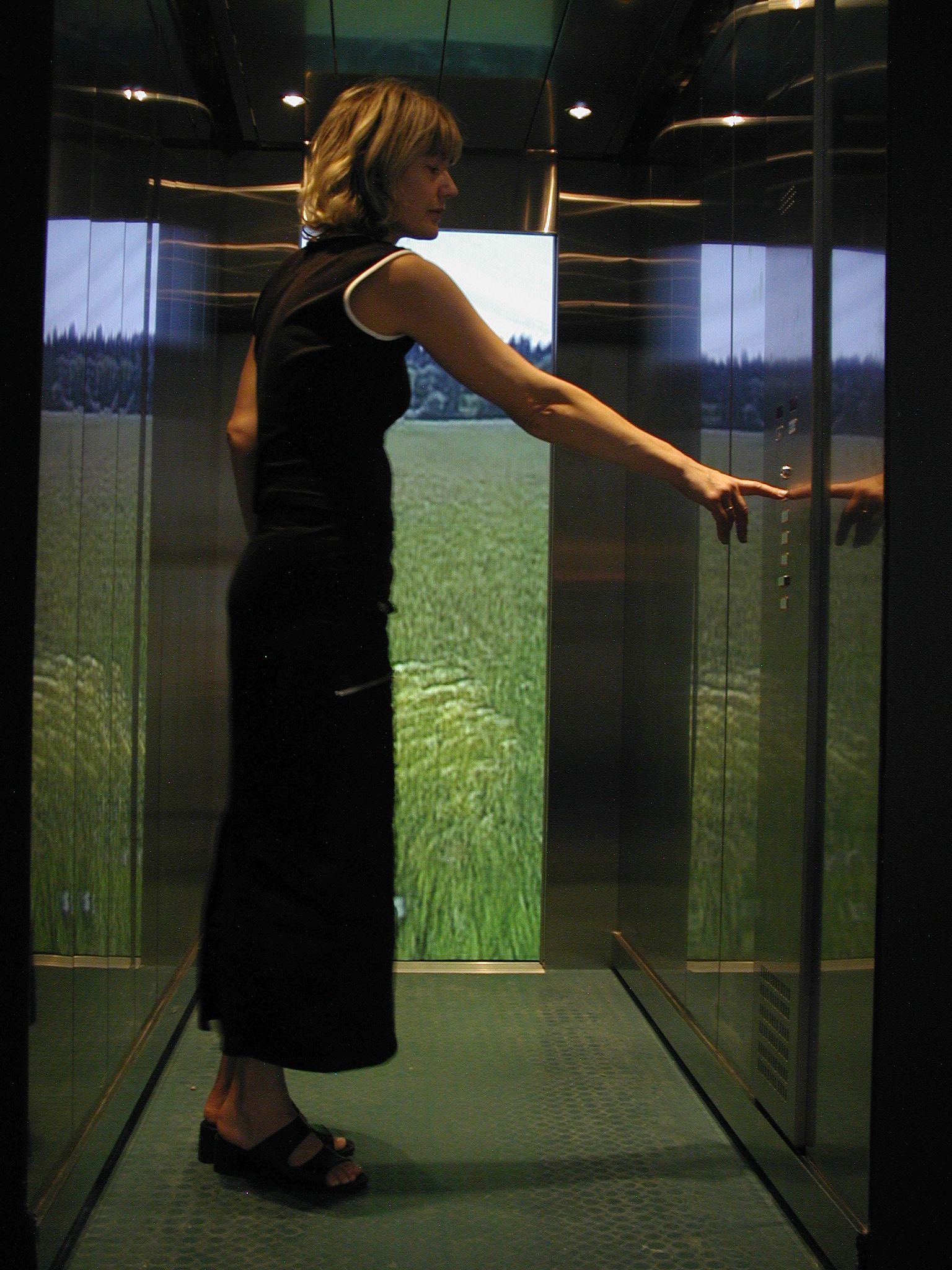Kai Kaljo

Kai Kaljo giving a talk at CCA Estonia in 1999
She has held solo exhibitions in Estonia as well as elsewhere in Europe. Kaljo has also participated in group exhibitions and film and video festivals all over the world. Her works belong to the collections of Moderna Museet, the Art Museum of Estonia and Sprengel Museum, among others. She has been awarded the Kristjan Raud Prize (2006), the Annual Award of Estonian Cultural Endowment (2000,) and the Award of the Annual Exhibition of the Soros Centre for Contemporary Arts, Estonia (1994, 1998).
During my studies at the art academy, I felt we had little awareness of the art that was being made elsewhere in the world, and how Estonia could relate to it. Today, it’s hard to imagine life without the internet, but in the 1980s there weren’t even many art books available that featured colour images, you could only look at those in libraries. In the State Art Institute of Estonia (ERKI), lectures on Western art history concluded with the 1950s. Yet, despite this lack of information, I at least felt an unconscious wish to do something that had not been done before.
I’ve always felt it limiting to express myself in just one genre, and so the freedom of the 1990s suited me marvellously. This was the most liberal era, even compared to now: no idea seemed too strange or improper.
The establishment of the Soros Center for Contemporary Arts, Estonia (now CCA) provided the opportunity to get funding to produce works for the annual exhibition, which back then was something new. Many things we take for granted today were then cosmically expensive, and great ideas would have otherwise remained unrealised.
I was conceptually influenced by the life around me, which was rapidly transforming and full of hope. Everything was new, the borders were opening, and I created several video works at residencies in Germany, the US, London and elsewhere. No one suggested that I should engage with Eastern European topics, and to my knowledge I really haven’t either. Even my work Loser (“Luuser”, video, 1997) was thematically just as understandable in the West.
I would still gladly work with monumental painting today, if I were commissioned.
Jaan Toomik

Jaan Toomik (on the right) with art writer Ants Juske and artist Kiwa in Düsseldorf in 2000
My studies took place during a tumultuous time and this had a great impact on me. Even before I began my diploma work, I was boldly experimenting with the possibilities of painting. By the late 1980s, it was possible to experiment like this. The old faculty didn’t dare intervene, and were uncertain about showing any opposition themselves. And so it happened that already before my graduation work I had lost all interest in painting. Everything else, performative practices, land art and other things just seemed more interesting. I transitioned smoothly into the international trends.
I graduated from the art academy in the spring of 1991, when they hadn’t yet declared the independent Republic of Estonia – by autumn this had already happened. The Soros Center for Conteporary Arts, Estonia was established in 1992, and it happened to be during this time that they first began selecting Eastern European artists to take part in the São Paulo Biennial (1994). This gave me the opportunity to step into the international arena, which was a success, providing me with a series of exhibitions around the world. The Soros Center provided support in organising all of this. At first, communication with the outside world went through fax; we sent in visual materials via post.
Since we didn’t have to go through all of the various developments of art in our re-independent Estonia, we could jump straight into the new era, and with a fresh perspective because there was no information about what had been studied in the West. Everything we did was based on enthusiasm, and often without knowing what had already been done. This gave us creative freedom. Oddly enough, us young artists got the hang of the wider field quite fast. I attended the legendary documenta 9 exhibition in 1992 and immediately understood it, even though I hadn’t seen many of the exhibited works nor even heard about the themes. Integrating into the broader art scene happened very quickly.
Anu Juurak
She has received the Cultural Endowment of Estonia’s annual award (1998, 2008), the main prize for the annual exhibitions of the Soros Center for Contemporary Arts, Estonia (1996, 1997), and several accolades from graphic and poster art biennials.

Anu Juurak with her interactive spacial installation The Elevator in 1997
For me, the transition to new media that happened in the 1990s was both ground-breaking and smooth, since at the time I was an emerging artist, and happy to experiment with new means of expression. I think the most impactful paradigm shifts happen in moments of crisis.
Estonia had well-established traditions in printmaking, especially intaglio printing. Already during the Soviet era, an experimental printmaking studio operated under the Estonian Artists’ Union. Skilled masters worked there, prints were made on relatively high-quality paper and essential colours – black and brown – were readily available. In contrast, working with new media meant acquiring everything by yourself and learning from scratch. Where could you borrow a video camera and projectors? Who knew how to make a quality soundtrack for a video piece? Who would lend a suitable graphics card? Who could program? In most cases, the necessary equipment had to be borrowed, and at times it felt like you were more of a project manager than an artist.
In 1996, I held my second solo exhibition, which featured only video installations. I presented a group of works together as a spatial installation: Train (“Rong”), which indeed rode through the various seasons; Picture (“Pilt”), a flickering video image in an old picture frame; and Water (“Vesi”), with video monitors arranged like containers of water. The entire space was immersed in a reflective installation, Clouds (“Pilved”). People told me that this was certainly not an exhibition appropriate for a woman. The art scene at the time had become increasingly polarised. The established artists who had enjoyed much attention and support during the Soviet period were now outraged. I experienced this first-hand when my otherwise sympathetic and friendly colleagues explained to me single-mindedly that photography and video art could not be taken seriously as genres, and that bringing interactivity to art exhibitions was inappropriate. They considered this a pathology that would soon pass.
And still – for me there was no other choice but to start working in new media, which was exciting, uncertain, in its early stages, much like the country we were living in. This new situation had to be supported in every way imaginable.